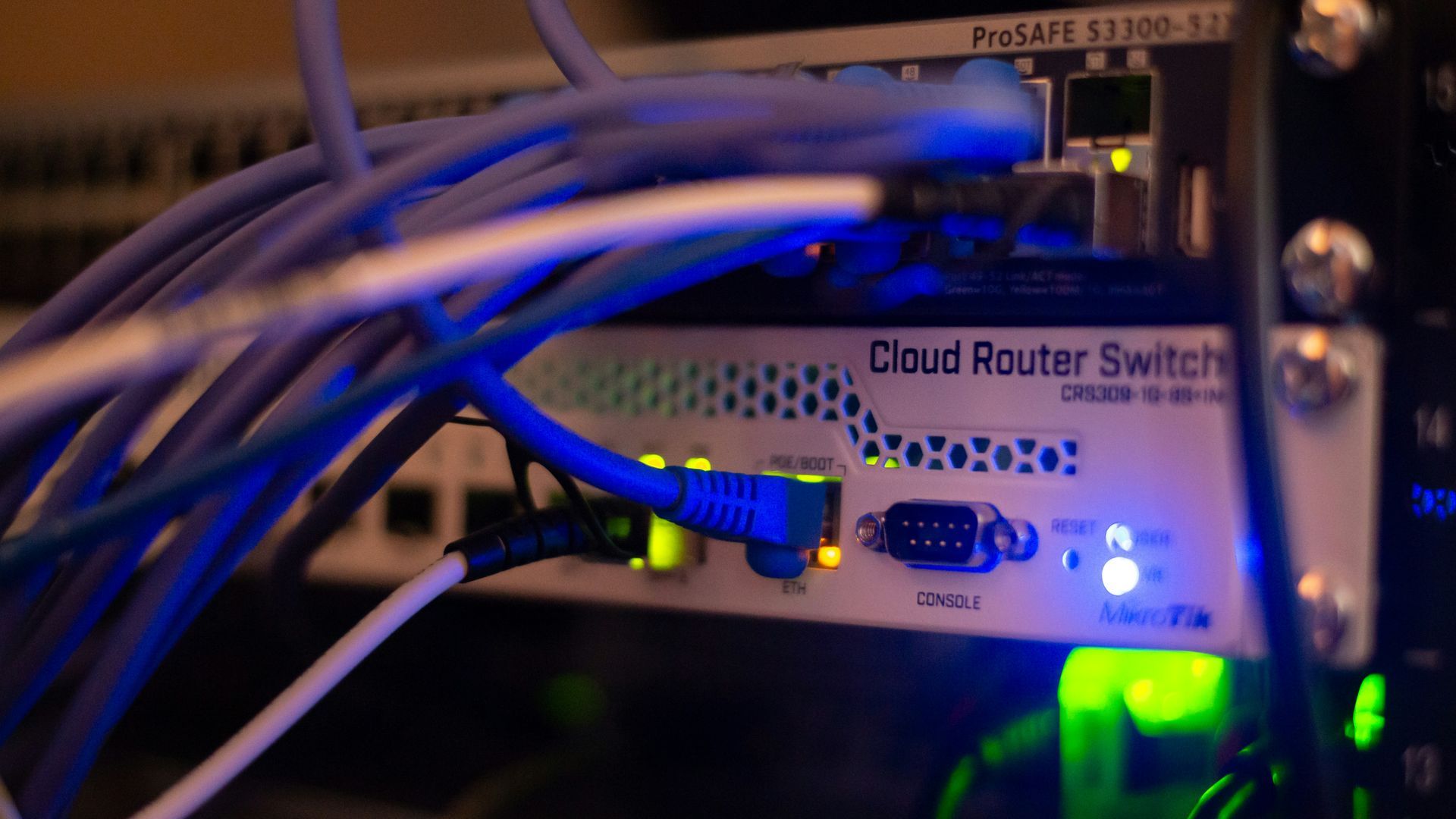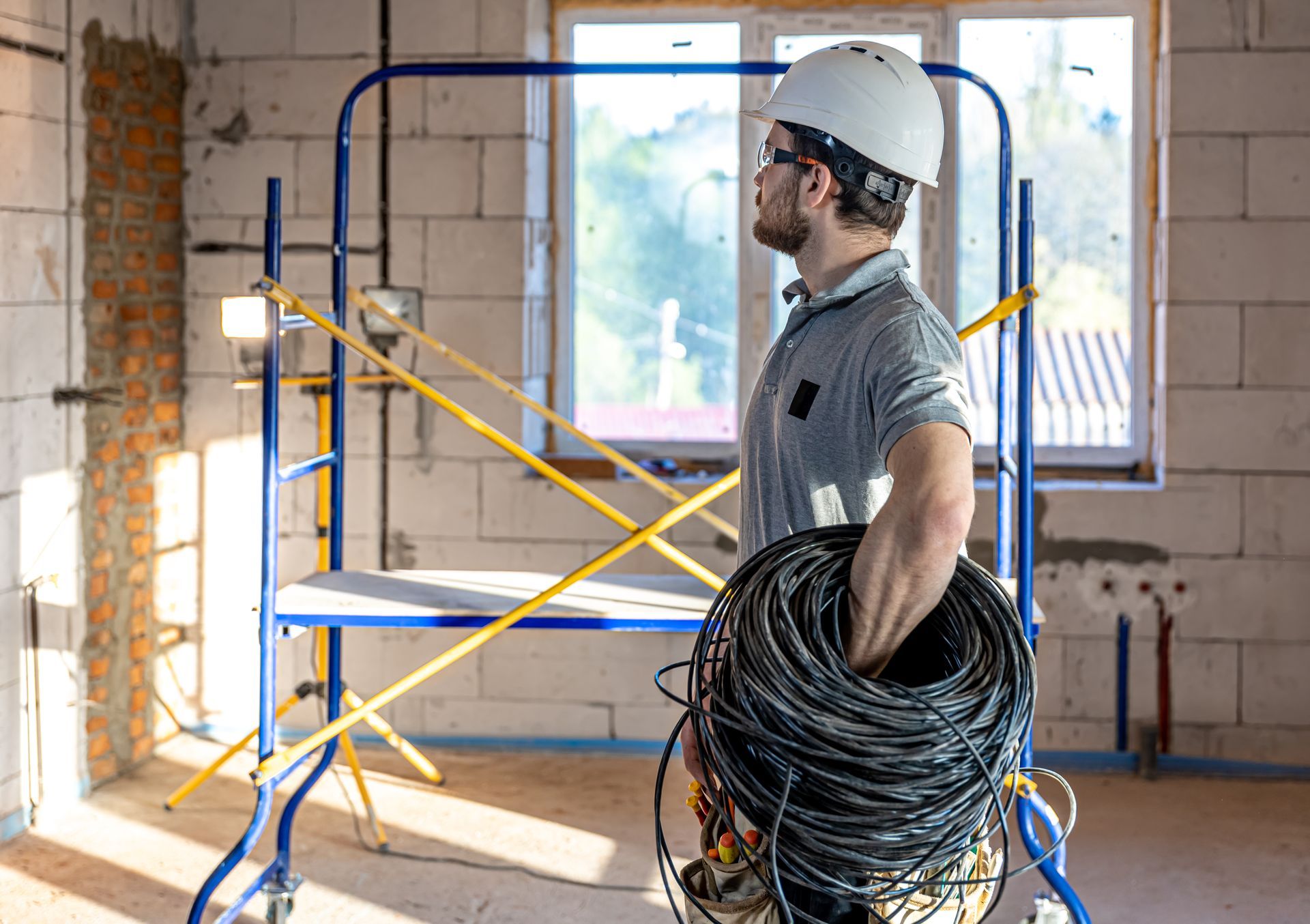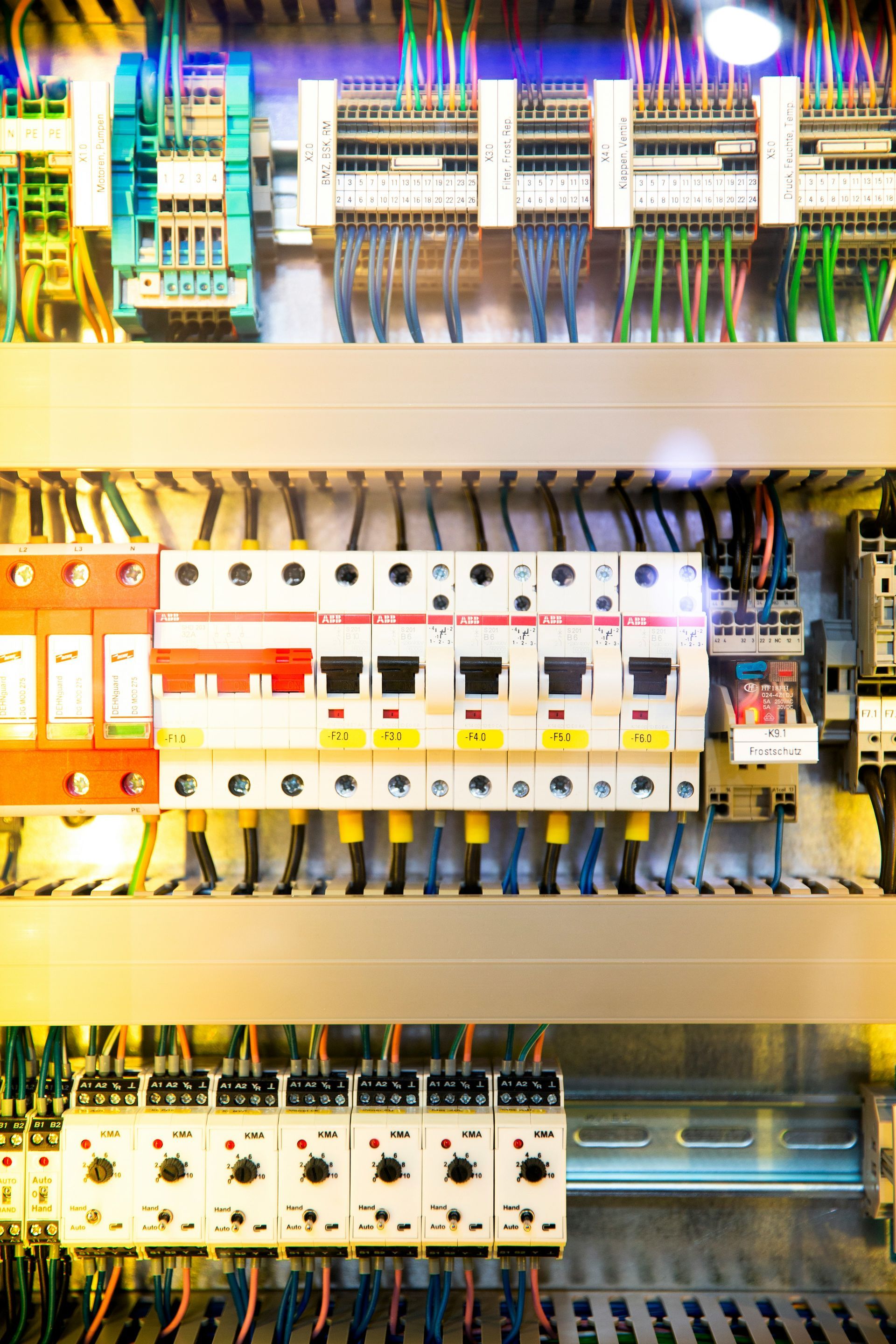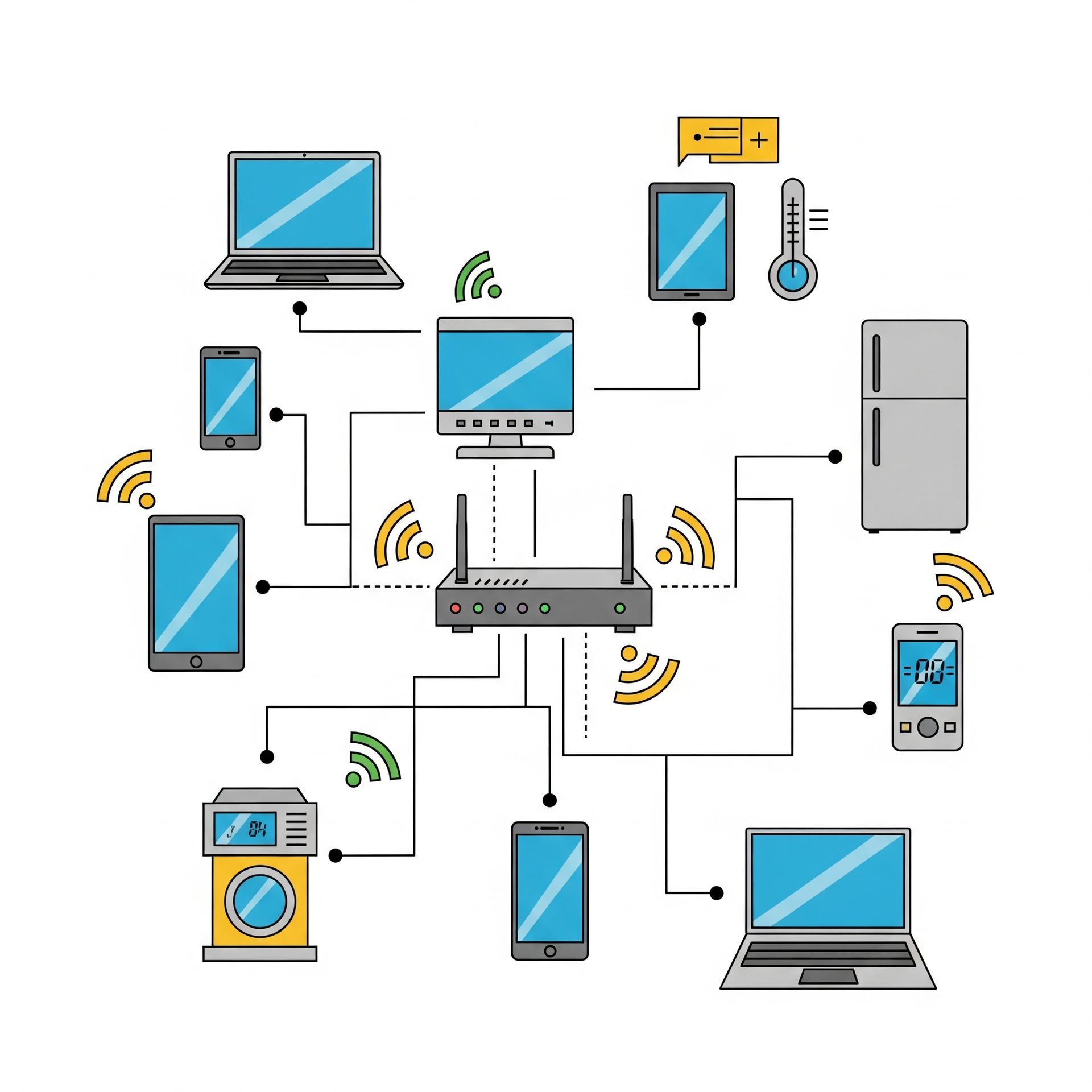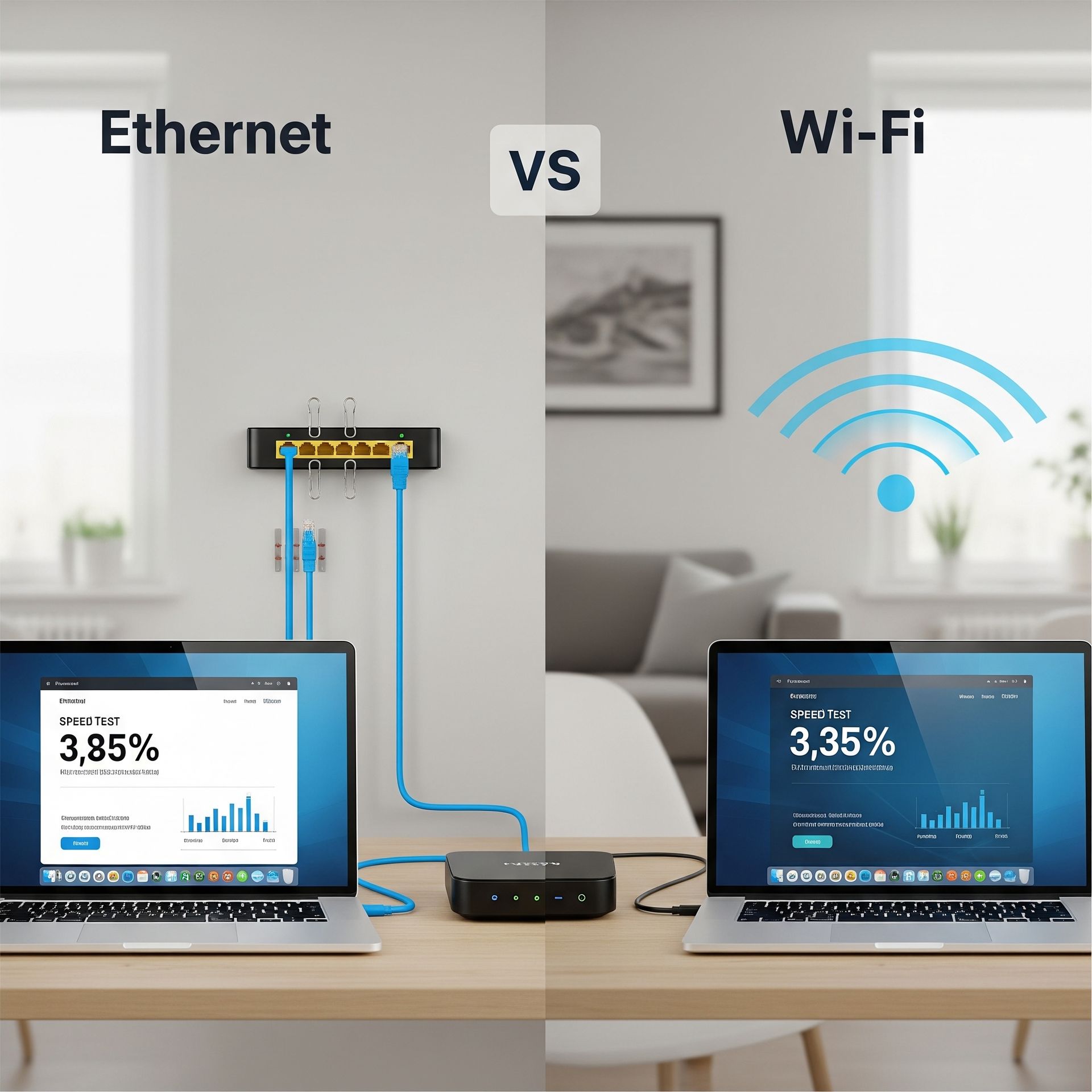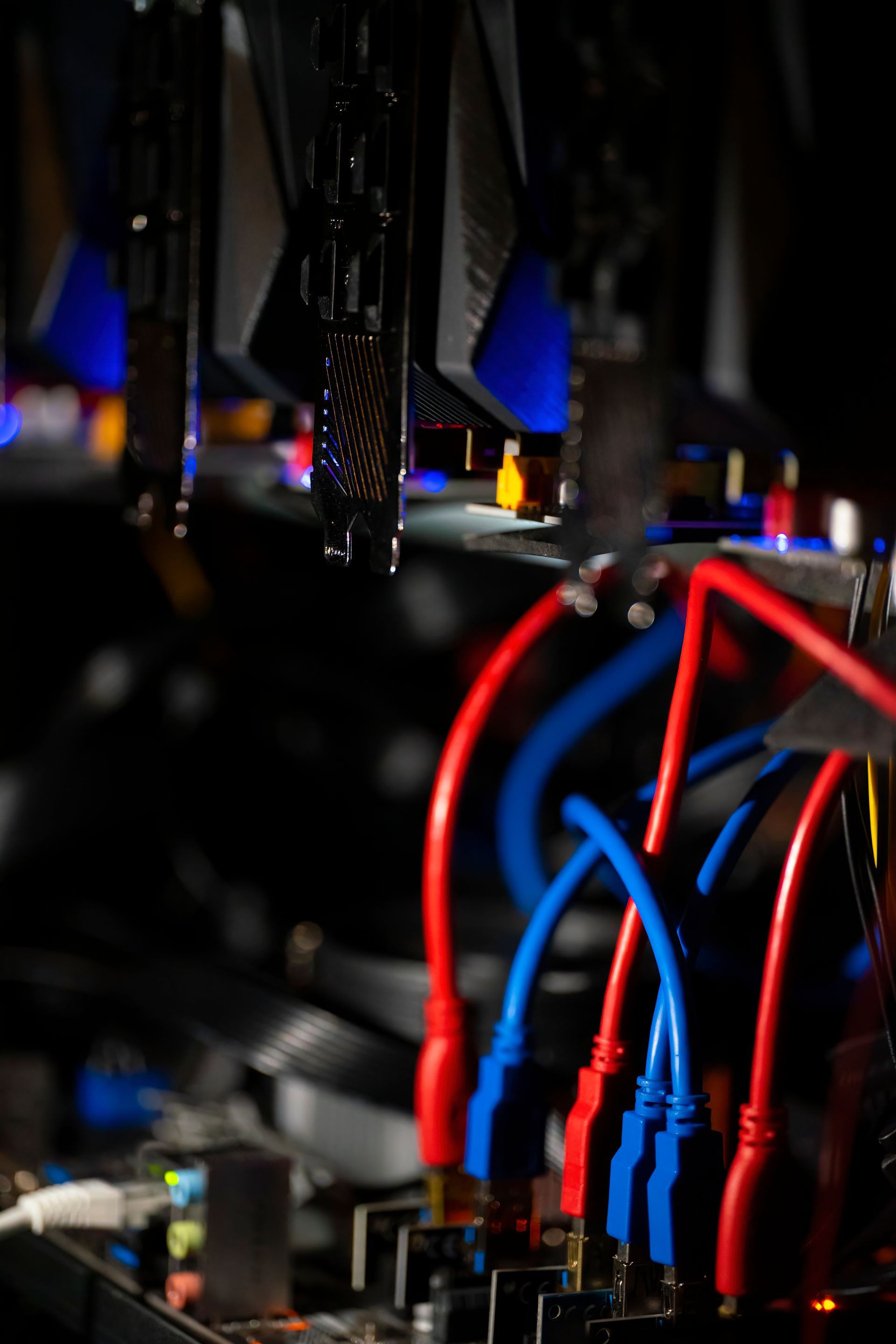Cat5 vs Cat6: What’s the Difference?
When it comes to internet connectivity, the type of Ethernet cable you choose can make a big difference in your network’s speed, performance, and reliability. One of the most common questions people face is Cat5 vs Cat6—what’s the difference, and which one is right for your needs?
Whether you're setting up a home office, upgrading your business network, or simply looking to improve internet speed, understanding the key distinctions between Cat5 and Cat6 cables is essential.
Each has its own advantages and ideal use cases. In this guide, we’ll break down the core differences to help you make the best choice for your setup.
Understanding Ethernet Cable Categories
Ethernet cables are essential for creating a wired network, providing a stable and reliable connection that wireless options sometimes lack. They come in various categories with different specifications and capabilities, designed to cater to multiple data transmission needs.
The two most common types you'll encounter in both residential and commercial settings are Cat5 and Cat6. Understanding these categories is crucial for anyone looking to ensure they have the proper infrastructure to support their internet usage.
What is a Cat5 Ethernet Cable?
Cat5, short for Category 5, is one of the oldest types of Ethernet cables still in use today. Initially developed in the mid-1990s, they were the standard for many years. They are still found in older home networks and office setups.
These cables offer a reliable connection for basic internet tasks and have been the backbone of many residential networks for decades. Despite being surpassed by newer technologies, Cat5 cables are cost-effective and widely available, making them a viable option for those with modest internet needs.
Cat5 Cable Speed and Specifications
The Cat5 cable can handle speeds up to 100 Mbps (megabits per second) and has a bandwidth of 100 MHz. This makes it suitable for basic internet browsing and streaming, activities that do not demand high data transfer rates.
However, with the ever-increasing demand forhigher speeds due to the proliferation of smart devices and high-definition content, Cat5 is slowly becoming outdated. As more households and businesses require faster and more efficient networks, the limitations of Cat5 cables become more apparent, necessitating an upgrade to meet modern demands.
Introducing Cat5e: An Improved Version
The Cat5e (Category 5 enhanced) is an improved version of Cat5 cables, addressing some of the limitations of its predecessor. It supports speeds up to 1,000 Mbps, similar to its predecessor.
The enhancement mainly lies in its ability to reduce crosstalk, which is interference between signals on different cables. This makes Cat5e a more robust option which lowers risks of data loss or corruption during transmission.
What About Cat6 Ethernet Cables?
Now that you've learned about cat 5 ethernet cable, let's discuss the upgraded version.
Cat6 cables offer a significant upgrade over Cat5. It's time to learn about the higher version: Cat6e cable, especially regarding speed and performance. They are designed for more demanding applications and are becoming the new standard in many homes and businesses.
With the ability to support faster data transfer rates and greater bandwidth, Cat6 cables are well-suited for modern applications that require a stable and fast connection, such as high-definition streaming, online gaming, and large file transfers. Their improved construction makes them more resistant to external interference, ensuring a reliable connection even in challenging environments.
Cost: Ethernet Cable Cost vs WiFi Setup
When considering cost, both options have different implications. It's important to weigh the initial investment against the long-term benefits to determine the best choice for your home network.
Cost of WiFi
Setting up a WiFi network involves purchasing a wireless router. While the initial cost might be higher compared to just buying cables, the convenience and flexibility often justify the expense for many homeowners. WiFi routers come in a range of prices, with more expensive models offering advanced features like improved range, faster speeds, and enhanced security.
In addition to the router, you may need to invest in range extenders or mesh systems to ensure adequate coverage throughout your home. These additional devices can increase the overall cost of a WiFi setup.
Despite the higher initial cost, the convenience of WiFi makes it a worthwhile investment for many households, especially those with multiple mobile devices and smart home gadgets.
Cost of Ethernet
Ethernet cables are generally inexpensive, but the cost can add up if you need to run cables throughout your home. Additionally, if your devices are far from the router, you might need longer or more complex installations, which can increase costs. Professional installation may be required for complex setups, adding to the overall expense.
While the initial cost of Ethernet may be lower than WiFi, the need for extensive cabling can make it a more costly option in some cases. However, the long-term benefits of reliability and performance often outweigh the initial investment for users who require a stable and fast connection.
For those who prioritize cost-effectiveness, Ethernet offers a reliable and affordable solution, especially for stationary devices that can be easily connected via cables.
Are All Ethernet Cables the Same?
The straightforward answer is no. While all Ethernet cables may look similar, the internal construction and performance vary significantly across different categories.
Each cable type is designed with specific applications and usage scenarios in mind. Choosing the right cable depends on your particular needs and the speed requirements of your network.
How Fast is Cat6 Compared to Cat5?
When comparing the speeds of Cat5 and Cat6, Cat6 cables are far superior. They can handle up to 10 times the data transfer rate of Cat5 cables, making them a better choice for modern networks that require high-speed internet.
This increased capacity is particularly beneficial for households and businesses that rely on cloud computing, streaming services, and other data-heavy applications. The superior performance of Cat6 cables ensures that your network can handle the demands of today's digital landscape with less downtime.
Cat6e Cable: Even More Advanced
Cat6e cables enhance the standard Cat6 cables, offering even higher performance and improved capabilities. They are designed to support 10
Gbps over longer distances, making them ideal for larger homes or office buildings with greater distances between devices and network equipment.
The enhanced construction of Cat6e cables reduces the risk of signal degradation over long distances, ensuring consistent and reliable performance across your entire network. Cat6e cables provide a robust and scalable solution for those looking to future-proof their network infrastructure.
Choosing the Right Ethernet Cable for Your Needs
Selecting the appropriate Ethernet cable involves considering the speed requirements of your internet connection and the distance between your devices and the router. Matching the cable's capabilities with your network's demands is essential to ensure optimal performance.
By understanding the strengths and limitations of each cable type, you can make an informed decision that meets your current and future connectivity needs. The right choice can enhance your internet experience, providing fast, reliable, and secure access to online resources.
Considerations for Homeowners
For homeowners, if your internet speed is less than 100 Mbps, a Cat5e cable will suffice, providing a cost-effective solution for basic internet needs. However, if you're planning for future upgrades or need higher speeds for activities like streaming 4K videos or online gaming, investing in Cat6 or Cat6e cables is wise.
These cables offer the performance and reliability needed to support high-speed internet connections and the growing number of connected devices in modern homes. By choosing the right cable, homeowners can ensure that their network is ready for future advancements in internet technology.
Installation and Longevity
When installing Ethernet cables, it's crucial to consider the environment and potential sources of interference. Cat6 cables are more robust and better shielded, making them a better choice for environments with a lot of electronic interference, such as near power lines or other electronic devices.
They also offer better longevity, meaning they won't need to be replaced as frequently as Cat5 cables, providing a cost-effective solution in the long run. Proper installation and maintenance of your Ethernet cables can extend their lifespan and ensure consistent network performance over time.
Final Thoughts
Understanding the differences between Cat5 and Cat6 cables helps you make informed decisions about your home or business network setup. While Cat5 cables are suitable for basic needs, Cat6 and Cat6e cables offer superior speed and performance, making them the go-to choice for modern internet demands.
The correct cable can significantly impact your internet experience, providing the speed and reliability needed to support various online activities. Investing in the appropriate Ethernet cable ensures your network can handle current and future connectivity requirements.
In conclusion, while all Ethernet cables seem similar at first glance, choosing the right one can significantly impact your internet experience. Whether you're a homeowner looking to upgrade your network or planning a new installation, selecting the right cable ensures reliable, fast, and future-proof connectivity.
By understanding the capabilities and limitations of each cable type, you can make an informed decision that enhances your network's performance and supports your internet usage for years to come.
Trusted Cabling Experts in Los Angeles
At Cat5Guy, we've proudly served Los Angeles for over 20 years, delivering reliable low-voltage cabling, fiber optics, and structured cabling solutions to businesses and homeowners alike. Whether upgrading your office network, wiring a new construction project, or improving Wi-Fi coverage at home, our experienced team is here to help.
Let us design and install a custom cabling solution tailored to your needs.



